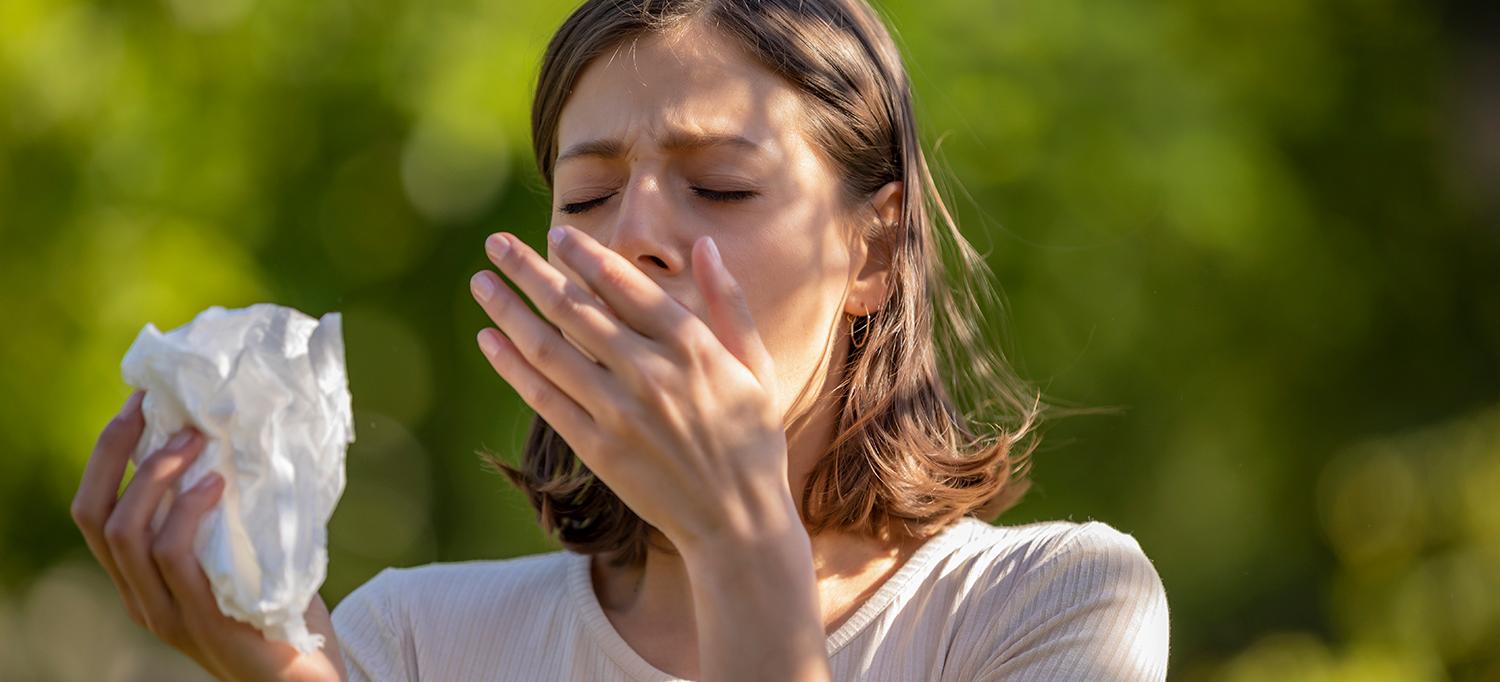Allergic Rhinitis (Hay Fever): A Comprehensive Guide to Sneezing and Sniffling Relief
Ah-choo! If you find yourself sneezing, sniffling, and battling itchy eyes, especially during certain times of the year, you’re not alone. Allergic rhinitis, commonly known as hay fever, is a widespread condition that affects millions worldwide. While its symptoms might seem like a minor inconvenience, allergic rhinitis can significantly impact quality of life and even trigger asthma attacks in some individuals. In this comprehensive guide, we’ll delve into the causes, symptoms, diagnosis, treatment options, and natural remedies for allergic rhinitis, empowering you with the knowledge to manage this bothersome condition and reclaim your spring and summer enjoyment.
What is Allergic Rhinitis?
Allergic rhinitis is an allergic reaction to airborne substances like pollen, dust mites, pet dander, or mold. When these allergens enter the nasal passages, they trigger an immune response, leading to the release of histamine and other inflammatory chemicals. This results in the classic symptoms of hay fever:
- Sneezing: Often repetitive and forceful.
- Runny nose: Clear, watery discharge from the nose.
- Stuffy nose: Congestion and difficulty breathing through the nose.
- Itchy eyes: Red, watery, and irritated eyes.
- Itchy nose and throat: An irritating sensation in the nose and throat.
While allergic rhinitis is most commonly associated with pollen allergies (hence the term “hay fever”), it can be triggered by various allergens throughout the year.
Types of Allergic Rhinitis
There are two main types of allergic rhinitis:
- Seasonal Allergic Rhinitis (SAR): Occurs during specific seasons, usually spring, summer, or fall, when pollen levels are high. This is often referred to as “hay fever” because it commonly occurs during hay-harvesting season.
- Perennial Allergic Rhinitis (PAR): Occurs year-round and is triggered by indoor allergens like dust mites, pet dander, and mold.
Causes of Allergic Rhinitis
The underlying cause of allergic rhinitis is an overactive immune system response to allergens. When a person with allergies inhales an allergen, their immune system mistakenly identifies it as a threat and releases histamine and other chemicals to combat it. This immune response leads to the inflammatory symptoms associated with hay fever.
Risk Factors
Several factors can increase your risk of developing allergic rhinitis:
- Family History: If you have a family history of allergies or asthma, you’re more likely to develop allergic rhinitis.
- Environmental Exposure: Living in areas with high pollen counts or exposure to other allergens, such as pet dander or dust mites, can increase your risk.
- Age: Allergic rhinitis can occur at any age, but it’s most common in children and young adults.
Diagnosing Allergic Rhinitis
If you suspect you have allergic rhinitis, consult a doctor or allergist. They will typically perform the following:
- Medical History: Ask about your symptoms, their timing, and any potential triggers.
- Physical Examination: Examine your nose, eyes, and throat for signs of allergic inflammation.
- Allergy Testing: Skin prick tests or blood tests can identify specific allergens causing your symptoms.
Treatment Options
The good news is that there are various effective treatments for allergic rhinitis:
- Antihistamines: These medications block histamine release, reducing symptoms like sneezing, itching, and runny nose. They’re available over-the-counter or as prescription medications.
- Decongestants: These drugs help relieve nasal congestion by shrinking swollen nasal tissues. They’re available as pills, nasal sprays, or drops.
- Nasal Corticosteroids: These nasal sprays reduce inflammation in the nasal passages, providing long-term relief from symptoms.
- Leukotriene Modifiers: These medications block the action of leukotrienes, which are chemicals involved in allergic reactions.
- Immunotherapy (Allergy Shots): This involves receiving regular injections of small amounts of allergens to desensitize your immune system and reduce your allergic response over time.
Natural Remedies and Lifestyle Changes
In addition to medications, consider these natural remedies and lifestyle changes to manage allergic rhinitis:
- Saline Rinse: Rinsing your nasal passages with saline solution can help flush out allergens and reduce inflammation.
- Humidifier: Using a humidifier can add moisture to the air, soothing irritated nasal passages.
- Avoid Triggers: If possible, limit your exposure to known allergens, such as pollen, dust mites, or pet dander.
- Keep Windows Closed: During high pollen seasons, keep windows closed and use air conditioning.
- Change Air Filters Regularly: Clean or replace air filters frequently to trap allergens.
- Shower After Being Outdoors: Showering and changing clothes after spending time outdoors can help remove pollen from your skin and hair.
Living with Allergic Rhinitis
While allergic rhinitis can be frustrating, it doesn’t have to control your life. By understanding your triggers, following your treatment plan, and adopting healthy lifestyle habits, you can effectively manage your symptoms and enjoy the seasons without constant sneezing and sniffling.
When to Seek Medical Attention
If your symptoms are severe or not adequately controlled with over-the-counter medications, consult your doctor or allergist. They can help you develop a personalized treatment plan and address any underlying issues.
Remember, allergic rhinitis is a common condition, but it shouldn’t be taken lightly. With proper care and attention, you can breathe easier and enjoy the outdoors without fear of allergens.

